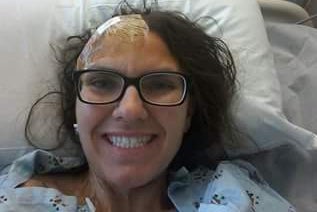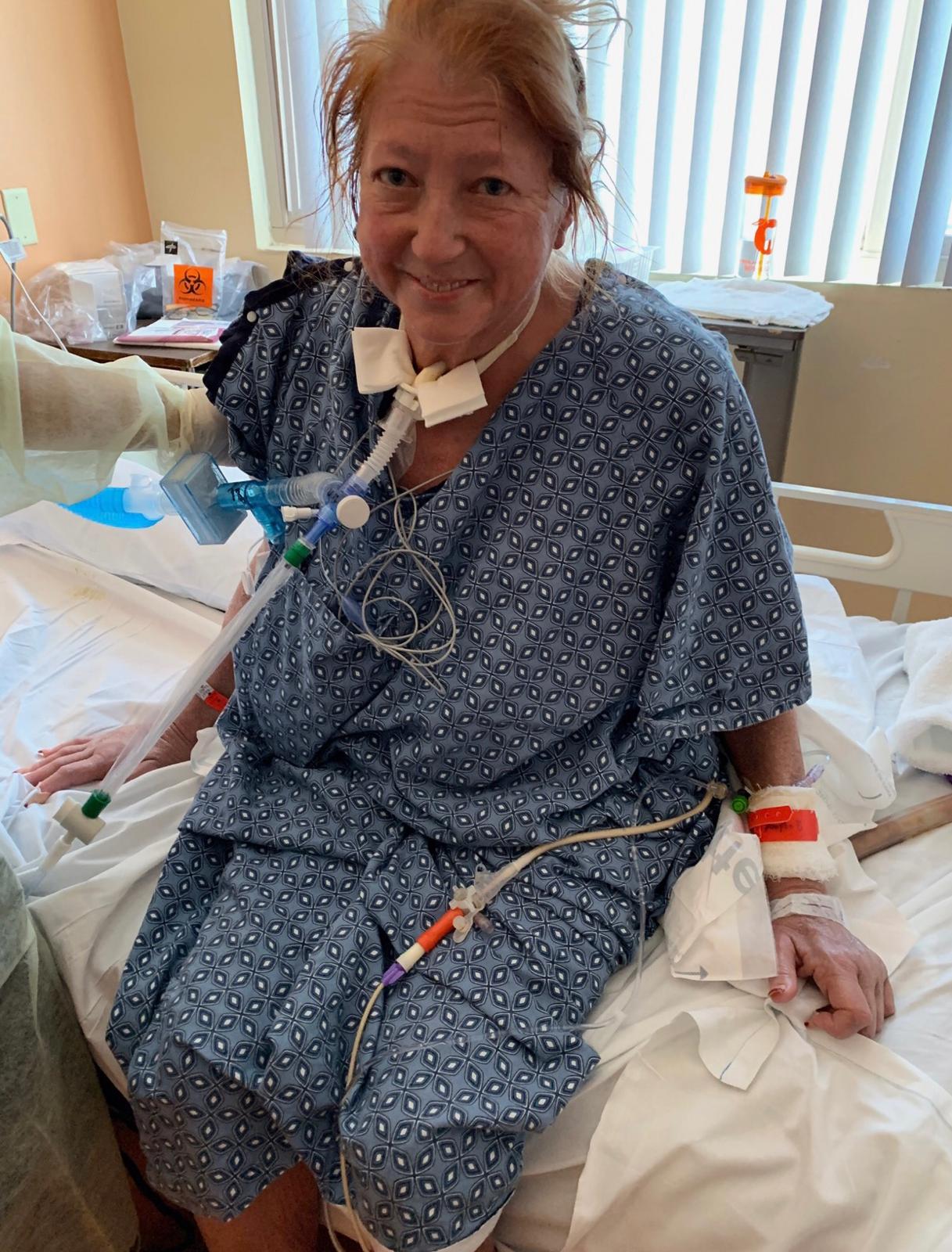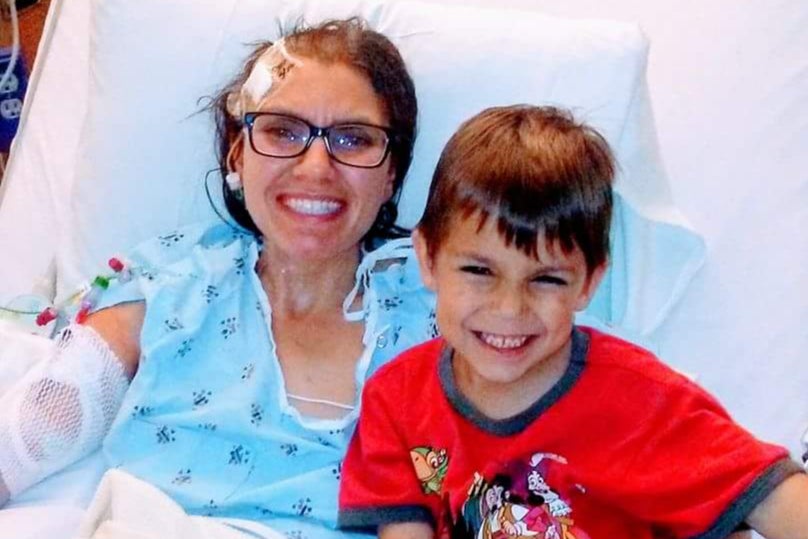Valley Fever: The deadly and incurable disease terrifying the west coast
Those with first-hand experience of the disease tell Mike Bedigan that awareness about the devastating effects of the disease is still shockingly minimal, even within the medical community


Your support helps us to tell the story
From reproductive rights to climate change to Big Tech, The Independent is on the ground when the story is developing. Whether it's investigating the financials of Elon Musk's pro-Trump PAC or producing our latest documentary, 'The A Word', which shines a light on the American women fighting for reproductive rights, we know how important it is to parse out the facts from the messaging.
At such a critical moment in US history, we need reporters on the ground. Your donation allows us to keep sending journalists to speak to both sides of the story.
The Independent is trusted by Americans across the entire political spectrum. And unlike many other quality news outlets, we choose not to lock Americans out of our reporting and analysis with paywalls. We believe quality journalism should be available to everyone, paid for by those who can afford it.
Your support makes all the difference.Sarris Baker sat by her daughter’s hospital bed, held her hand, and asked the question she most feared: “Honey, do you want to keep fighting?”
For seven years Cheyenne Baker had been in and out of hospital, after receiving a diagnosis of Valley Fever – a fungal disease which attacks the lungs, caused by the inhalation of airborne spores. Cheyenne’s health issues started back in 2011, when she was just 19.
Sarris had watched Valley Fever slowly steal Cheyenne’s life. Her baby son Eli had been born premature and she suffered from severe memory loss and epilepsy. Every day her symptoms worsened.
“I said, ‘if you’re done fighting, I will support you in that,” Sarris said, recalling that moment in March 2018. “If you are done fighting, I need you to squeeze my hand’... And she squeezed my hand.”
Cheyenne died on Friday 13 April 2018, just days shy of her 27th birthday.
The incidence of Valley Fever – known scientifically as Coccidioidomycosis, and colloquially as “Cocci” – has increased substantially over the past 20 years on the US west coast, with the most epidemic regions found in Arizona and Southern California.
Some experts believe the increase is related to the climate crisis, with extreme weather making conditions more likely for the fungus to spread.
Last August the California Department of Public Health (CDPH) warned of potential increased risk of Valley Fever statewide after winter’s heavy rains and summer’s increasingly hot temperatures. In January the CDPH said that a total of 9,280 cases with onset dates in 2023 had been reported in California, higher than any other year on record.

UCLA Health clinical microbiologist Dr Shaun Yang predicts that due to the climate crisis and global heating, the currently endemic fungus will become “more widespread and cause more infections.”
Though public discussion about the dangers of the disease – which is incurable – may be relatively recent, concerns have been raised for over two decades, with an Arizona Senate health committee hearing in 2003 that Valley Fever could be used “as an agent of bioterrorism”.
Despite this, there is a perception from those with first-hand experience of the disease that awareness about its devastating effects is still shockingly minimal, even within the medical community.
“The one promise I told my daughter was that I’d be her voice,” Sarris tells The Independent. “I understand about being sensitive but I just don’t want it sugar-coated. I just want it laid out.”
A growing problem
Most people have no idea when exactly they get Valley Fever, since it usually happens from breathing in some dust or dirt while outside.
Valley Fever spores are activated through a confluence of extreme dry and extreme wet weather. The fungus grows and thrives in wet conditions, then dries out into spores and can become airborne along with dust particles – which people then inhale unknowingly.
Once inhaled, the spores can infect the lungs and cause symptoms such as cough, fever, chest pain, night sweats or tiredness. In rare cases, the infection can spread beyond the lungs to other parts of the body – which is known as “disseminated Valley Fever”.
An astonishing 97 per cent of Valley Fever cases across the entire US are reported in Arizona and California, according to a report by the California Department of Public Health (CDPH) released earlier this year.
But despite the rising numbers in the Golden State — each year around 1,000 people in California are hospitalized from it — it has been estimated that over 60 per cent of US Valley Fever cases occur in Arizona.

In Maricopa County alone, which encompasses the state capital of Phoenix and the surrounding area, annual cases regularly match those of the whole of California. Provisional data from the CDC showed that as of 2 March 2024, there were already 2,929 recorded cases in Arizona.
The mortality rate remains thankfully low – with an average of approximately 200 deaths associated with Valley Fever each year for the past 25 years, according to National Multiple Cause of Death data.
However, even milder disease can affect people’s ability to work and function well in the long term, and also spawn multiple other serious conditions and illnesses.
“I had never heard of Valley Fever”
Tim Armstrong had been a truck driver for 32 years, operating in the area between Tucson and Phoenix, Arizona. In late 2016 he began getting severe headaches, which culminated one evening the following June.
“I was slumping in my seat and I finally got to my destination, and I couldn’t fill out the paperwork that I needed,” he tells The Independent. “I could barely walk.”
In the months that followed, Tim, 62, experienced constant headaches, night sweats and trouble breathing. At some points he was sleeping up to 20 hours a day. He still struggles.
“I drove hundreds of miles per day, every day… Now I rarely leave a five mile radius of my home,” he tells The Independent. “For 32 years I probably drove up to four and a half million miles. And that that was gone overnight, literally.”
In late 2001, Sharon Filip woke up feeling like she was being hit repeatedly with a baseball bat. The pain was so severe that Sharon woke her husband and asked him to say goodbye to her children for her.
Like Tim and many others, she too exhibited all the signs of Valley Fever, though had never heard of the disease.

“Something drastic was happening inside of me, and I didn’t know what it was,” Sharon told The Independent. “It was like nothing I’ve ever experienced before. I really didn’t think I was going to make it to morning.”
Sharon was later given an official diagnosis. Usually doctors find Valley Fever through blood work that shows antibodies, although sometimes chest X-Rays or CT scans of the lungs are needed to spot Valley fever pneumonia. Sharon believes she picked up the disease while taking her son to start college in Arizona.
Sharon and her other son David are now co-authors of the book Valley Fever Epidemic, and began the Valley Fever Survivor group, which has brought those affected by the disease together.
The group receives new members every month. Very few, if any, have heard about the disease prior to being exposed to it – either through personal experience or via a loved one – though it is not long before it consumes their entire lives.
Cheyenne Baker’s case escalated very quickly, her mother says. After first experiencing symptoms in December 2010, she was given an official diagnosis on 6 April 2011. Her son, Eli, was born extremely prematurely – after only 25 weeks – 18 days later.
In May 2015, she was diagnosed with epilepsy and by the winter of 2017 had developed severe memory loss, which was later determined to be a symptom of early-onset dementia.
“She had told me ‘Mom, I am a 20-something year-old girl in a 70-year-old body.’ That’s what she felt like,” Sarris tells The Independent.
She says despite her ordeal, Cheyenne remained positive and even retained a “sick” sense of humour, even when it came to discussing her own death.
“Every time [Cheyenne] was sick, even when she was little, everybody would be saying ‘oh, you’re just a hypochondriac.’ None of us really believed her as she was young and growing up.
“Of course I believed her when she got the Valley Fever, but she showed me this headstone she wanted. It said, ‘I told you I was sick’.”
Insufficient warning
Misdiagnosis and underreporting of Valley Fever cases is one of the biggest frustrations for Dr John Galgiani, director of the Valley Fever Center for Excellence at the University of Arizona (UoA).

He tells The Independent that because of its low prevalence, Valley Fever is considered an “orphan disease” and so often does not receive funding from the Food and Drug Administration (FDA) to develop treatments.
“The diagnosed cases are [currently] 20,000 per year,” Dr Galgiani says. “But that is the tip of the iceberg in terms of what the real problem is. There’s so many things that can be done about it but it just doesn’t get the attention it deserves.”
Dr Galgiani says that despite progress in recent years, up to 80 per cent of potential Valley Fever patients are still not being tested, due to a lack of knowledge or inaction from medical professionals.
“Part of it is that many people don’t train where this disease is common,” he says. “So they learned their craft and it wasn’t to include Valley Fever as part of the things to look for… there’s a lot of resistance. Not bad people, just inertia.
“Then a lot of doctors don’t know how to treat it or manage it again so... you know, if they get a positive test, they don’t know what to do with it. So that’s a good reason not to test.”
By the time Shirley Paulson, from Lancaster, California, was given a diagnosis of Valley Fever in January 2019, she was already in a coma.
Her experience had started with a general “not-well” feeling that had persisted until, like Sharon Filip, she had woken her husband in the middle of the night. She had demanded he take her to the hospital.
Despite undergoing significant testing, Shirley was put on incorrect medication, typically used – she said – to treat cancer patients. “It almost killed me,” she says. “I had an allergic reaction to that. All my skin peeled off, I gained 100 pounds of water… My kidneys started to fail so they had to put me on dialysis.”
She believes it would have been easy to have avoided such an ordeal. “I think that testing on me sooner, the first time I wasn’t feeling well – a blood test – would have made it so I didn’t get to the point I got to,” Shirley tells The Independent.

“A simple blood test would have determined that I had Valley Fever, and I wouldn’t have gone into a coma, I wouldn’t have lost five months of my life, and I wouldn’t be in the situation I’m in. It’s a simple darn blood test!”
Sharon and David Filip share a similar sentiment. “When you see the public service campaigns… they have things like Are you coughing? Are you feeling sick? Talk to your doctor about Valley Fever,” David says.
“That’s kind of like saying, ‘Are you passing through the windshield of your car?’ Maybe you should fight against drunk driving and have someone else drive.
“We’re talking about things after the fact which is allowing the people to come in and get infected rather than warning people ahead of time. There are no warnings.”
The spread of Valley Fever
Both the CDPH and CDC note that the climate crisis is likely a factor in the spread of Valley Fever, but opinion is divided among experts – with some arguing that despite all the signs, there is no explicit link as of yet.
Drought, aridity, dust storms, winds, and wildfires – all linked to climate change – create favorable conditions for the fungus to proliferate and be disseminated.
“Maybe in a few decades, half of the United States will be endemic for Cocci,” says UCLA Health’s Dr Yang.
However, others who have spent years attempting to link rising Valley Fever cases to the climate crisis say that there is still no concrete proof of causality.
“The reality is there is no science that shows explicit links,” Dr Andrew Comrie, climate scientist and Chief Academic Officer of the Arizona Board of Regents at UA tells The Independent. “There’s plenty of associations and you know, correlations and things but the actual causal path is not well understood. It’s maddening.”

Sarris Baker has since moved from Gustine, in California, to Michigan. She wants people to know what Cheyenne getting sick with this little-known illness meant for their family, physically, financially and emotionally, so that it might receive more national attention and support.
“I want everyone to know how devastating this was on her, and what a wonderful, vibrant woman she was through it all,” she tells The Independent.
“I want to go to Congress and show them 26 pictures of my daughter, one for every year she was alive and ask them what would you do if this was your child?
“I bet they would get funding if one of their kids ended up with it. But my daughter couldn’t get that help. And thousands of others cannot get that help.”
Next month marks the sixth anniversary of Cheyenne Baker’s death. Just over a week later, Eli will celebrate his 13th birthday.
Join our commenting forum
Join thought-provoking conversations, follow other Independent readers and see their replies
Comments